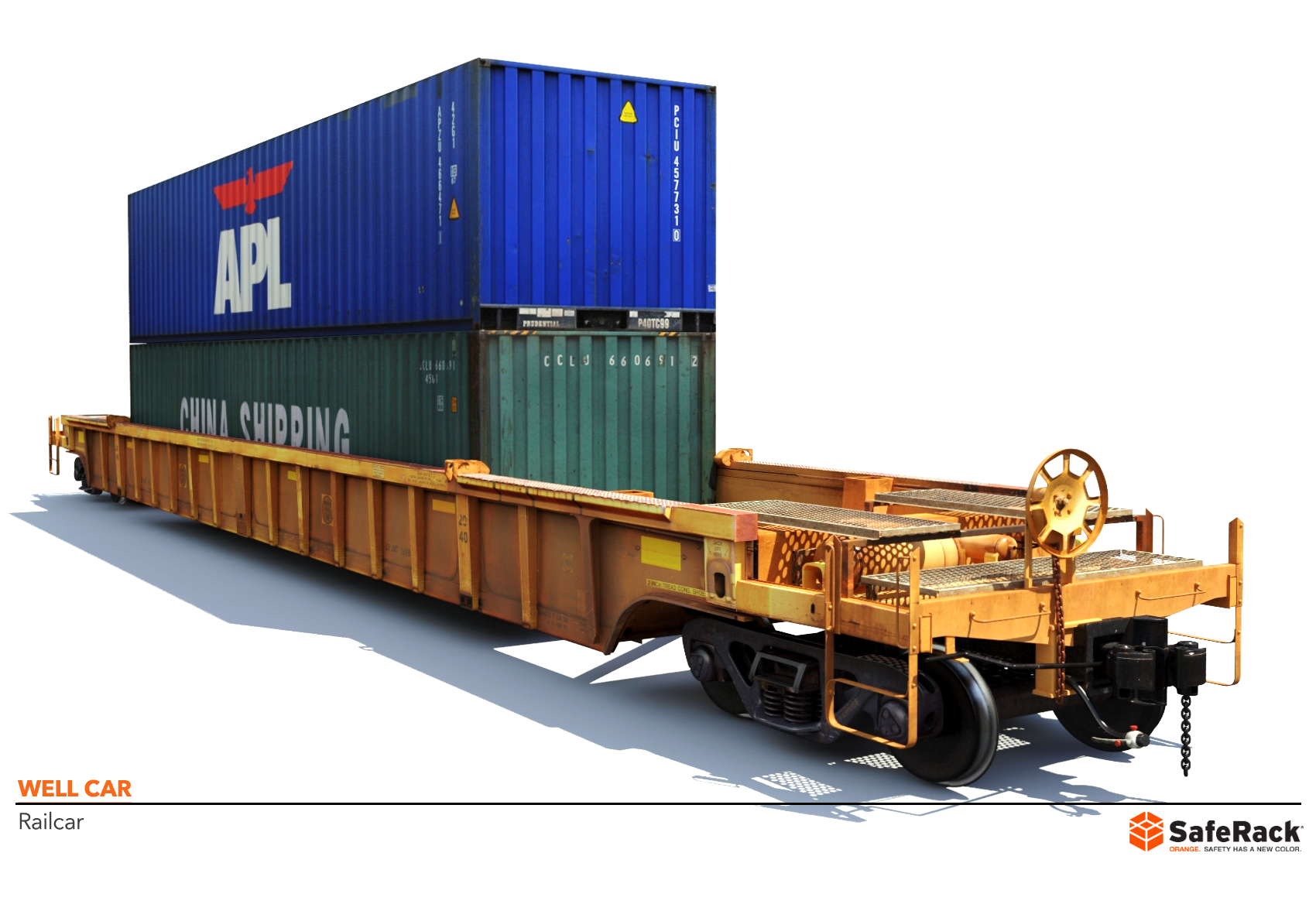The 12 Different Types of Railroad Cars
Autorack

Transports: Finished vehicles, including cars, trucks, and SUVs.
How it is built: Autoracks are made of metal and are entirely enclosed to protect vehicles from the elements. Metal “racks” inside create levels (also referred to as “decks”) within the rail car. Having multiple levels within the rail cars maximizes shipping space by allowing vehicles to be safely stacked during transport without causing damage to the vehicle. Traditionally, there are two kinds of autoracks: bi-level, which has two levels and can be used for any vehicle type, and tri-level, which has three and is typically used for smaller passenger vehicles.
Boxcar

Transports: Boxcars can carry a wide variety of crated or palletized freight, including paper, lumber, packaged goods, beverages and (shocker) boxes.
How it is built: Boxcars are fully enclosed and, true to their name, are the most “boxy” looking of all the rail car types. Boxcars typically have doors on the side of the car, but can have them at the ends, too. Because they are enclosed, boxcars protect the freight inside from weather during transport.
Centerbeam

Transports: Bundled goods like lumber, wallboard, fence posts and other building supplies.
How it is built: Not surprisingly, a centerbeam has a “center beam” or partition that reinforces the center of gravity and allows products to be secured in place.
Covered Hopper

Transports: Free-flowing dry bulk commodities like cement, roofing granules, sand, corn, wheat, barley, fertilizer, soda ash, sugar, and rice.
Hopper railcars feature an open-top, where a product is loaded. After loading, the top is covered to protect the product while it is transported from destination to destination.
The floor of a hopper railcar is sloped, allowing the product inside to be unloaded through doors at the bottom using gravity.
Coil Car

How it is built: Coil cars come in a variety of lengths, tonnage, and capacities for specialized commodities. For instance, some coil car troughs are designed to prevent coils from rolling, some feature side brackets so the load can be secured without using cables, and others are designed so special measures aren’t needed to secure the load. While coil cars often carry commodities that can’t be damaged by the elements, covered coil cars are available to offer this protection when needed.
Flatcar

Transports: Pipe, rail, steel plate, machinery, steel beams, tractors, military vehicles, lumber, poles and logs.
How it is built: Flatcars are, well…flat. Some feature an open design with a simple flat, even platform and others feature bulkheads at each end to protect loads from shifting. Like coil cars, flatcars come in a variety of lengths, tonnage and capacities and are ideal for freight that won’t be damaged by the elements. The open design of flatcars allows them to accommodate oversized and oddly shaped freight.
Gondola

Transports: Heavy bulk commodities including scrap metal, aggregates, logs, lumber, steel, sand, copper, and iron ore.
How it is built: Gondolas are sturdy cars with low sidewalls and open tops. Imagine a boxcar cut in half horizontally, and you’ve got yourself a gondola.
SafeRack for Railcar Loading and Fall Protection Solutions
Decades of Railcar Fall Protection Experience. SafeRack built one of the first crude oil railcar loading safety systems, so we know what works in the field. And we know how to build and engineer railcar loading systems that keep on working, too. We design, engineer, and install railcar loading platforms that keep loading rail cars and operations running efficiently and consistently.
Refrigerated Boxcar

Transports: Perishable freight, like fresh fruits, vegetables, frozen food, beverages, meat, poultry, seafood and cheese.
How it is built: Refrigerated boxcars (commonly referred to as “reefers”) are much like traditional boxcars but with one very important difference: they are temperature controlled.
Open-Top Hopper

Transports: Coal, petroleum coke, sand, rock, copper concentrate, and ballasting*
Open-top hopper railcars do not have covers, so are suited for heavy bulk commodities not affected by weather.
ballasting – a term which refers to the crushed rock used under the railroad tracks that act as support and cushioning
Tank Car

Transports: Compressed or liquid commodities, like chemicals, molasses, edible tallow, water, and diesel fuel.
General Service Tank Cars are for transporting bulk liquid communities with a capacity between 6,500 gallons to more than 30,000 gallons. Options include steam coils, insulation, linings and coatings, valves, and other fittings for railroad safety. Pressure ratings of our general service fleet are generally 100 lbs to prevent leaks.
Small Tank Cars (13,000 to 19,000 Gallon) – transport commodities such as molten sulfur, clay slurry, caustic soda, and corn syrup.
Medium Tank Cars (20,000 to 25,000 Gallon) – transporting commodities such as liquid fertilizers, chemicals, fuel oils and asphalt, and food-grade oils.
Larger Tank Cars (Over 25,000 Gallon) – Designed to transport food-grade oils, ethanol, petroleum products, and various chemicals.
Well Car
 Transports: Intermodal containers, which can hold a wide variety of goods.
Transports: Intermodal containers, which can hold a wide variety of goods.
Well cars, also known as “stack cars” or “well wagons” are specifically designed so intermodal containers can fit snugly inside. The “well” is a depression that sits close to the rails. Because well cars ride lower than flatcars, they allow for containers to be stacked on top of one another, with two containers per well car. This is commonly referred to as a “double stack.”























